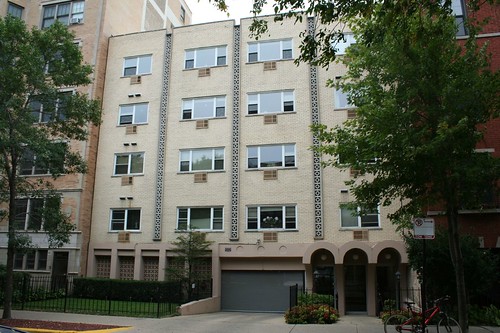
I wanted to talk a bit more seriously about the Four Plus One apartment buildings, beyond the level of just fawning over their entry canopies. Four Plus Ones got a bad rap even in their own day, and they aren't much more beloved today. Eventually, residents of Lakeview fought them to a standstill in the early 1970s.
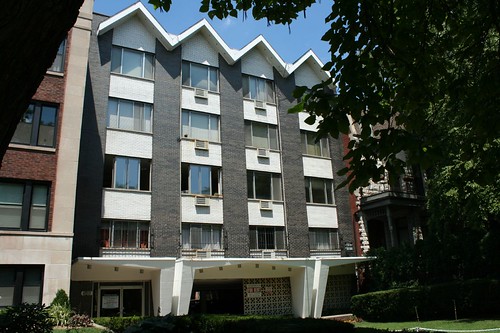
The big concerns about Four Plus Ones were three-fold: insufficient parking, increased density, and a change in the character of the residents. The last charge is the most interesting to me. Opponents maintained that 4-Plus-1 apartments attracted transient types - singles, young men, workers, all of whom had no attachments to the neighorhood and therefore had no incentive to maintain and improve it. It's an interesting argument, but it smacks of NIMBYism. Where else are these apparent undesirables supposed to go? Somewhere else!
As for the parking argument, well... quite a few of these buildings were slotted in between pre-war apartment buildings of equal or greater size - buildings that had no off-street parking at all. Nobody seems to raise an eyebrow at this.
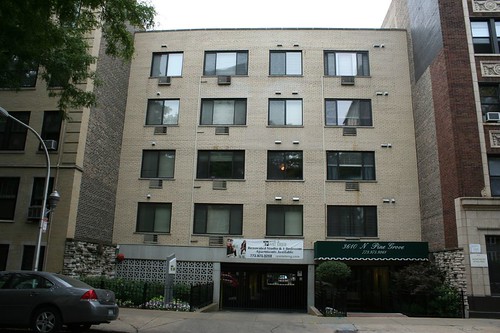
"Cheap construction" was another charge leveled at the 4 Plus 1 (by no less an authority than the AIA Guide to Chicago Architecture). But it's a relative term - brick veneer was never a cheap finishing material, even in the 1960s. And a demolition photo from Forgotten Chicago reveals that concrete block infill was also used, both as as a firebreak between units and also as the structural element of the exterior walls. Today, concrete block with brick facing is the gold standard of bearing wall and light frame construction.
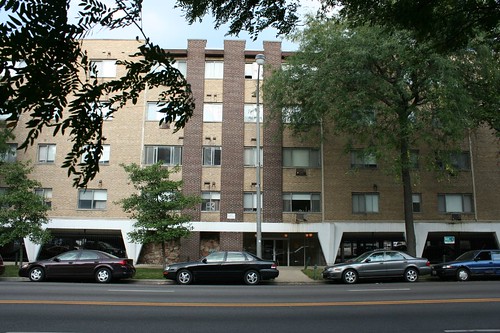
Underneath the brick, these buildings are actually wood-framed; to be sure, concrete framing would have been more pricey, but would it have made any difference to the buildings' appearance? Zoning codes required an upgrade in framing construction above four floors, so it was simple good economics to stop at that level and build in a more affordable material. If they'd been less "cheap", they'd have gone higher, been bigger, and thus amplified the neighbors' other concerns. How this makes the buildings "cheap" - in the derogatory sense, not economic - isn't clear. "Cheaply constructed" seems a pointless slur rooted in aesthetic dislike.
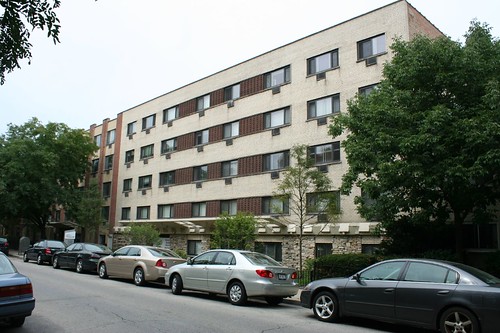

But hey, aesthetics aren't an invalid concern. Apart from their space-age concrete canopies and screen walls, there isn't much to these buildings as seen from the street. And if you didn't like a design once, you're unlikely to like it 50 more times. That's not much of an exaggeration; principal Four-Plus-One architect Jerome Sultan recycled some of his designs to an almost comical extent.
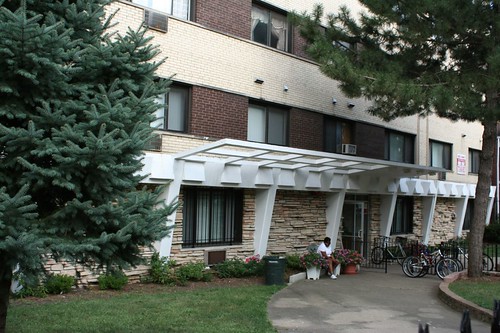
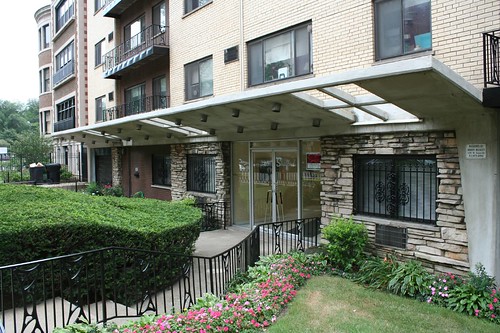
525 Stratford
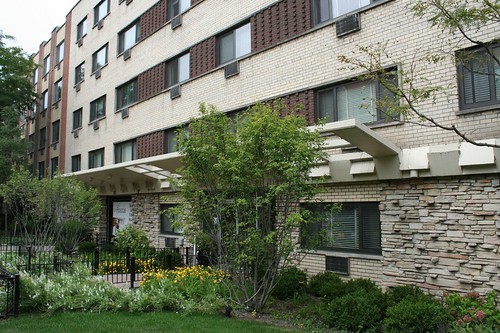
532 W. Roscoe
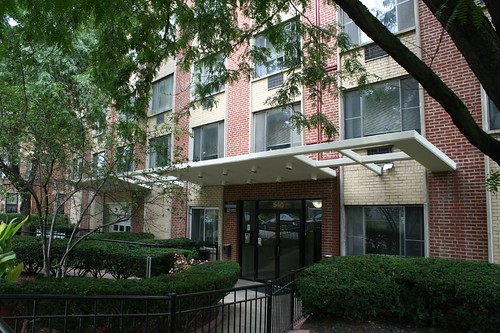
540 W. Roscoe
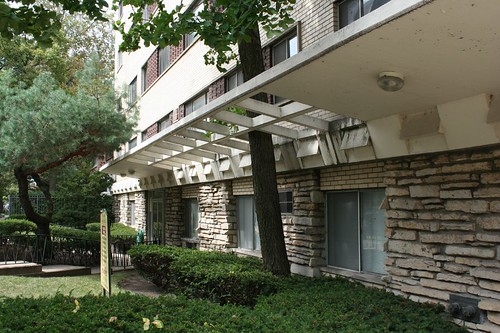
530 W. Aldine
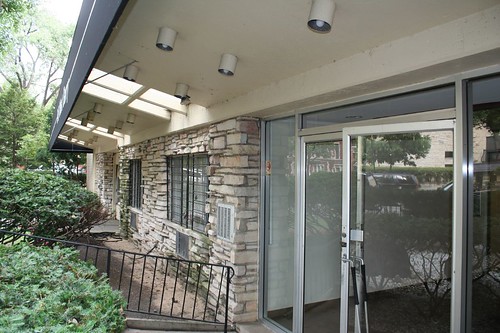
441 W. Barry
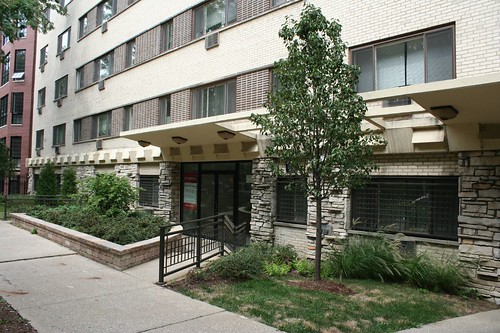
528 Oakdale
8 comments:
I always thought the issue with 4-plus-1s was more design and character. I wouldn't consider some of the building in your photos to be 4-plus-1s. I thought they were four stories of residential over top of an entire floor of parking on the ground floor. The parking garage as ground floor is the part that is totally out of character for an urban neighborhood and poorly designed. It makes the street feel dead and chops up the sidewalks. There are plenty of examples of studio apartment buildings from that era that feel more human and welcoming from the street. As far as criticisms about the types of people who live there -- I don't think it's worth giving the people to complain about "transients" any kind of serious consideration.
have you ever actually lived in one? it was one of the worst three months of my life, getting hustled into signing a lease into one of these crappy shanty towns. i can't imagine a resident ever waxing poetic about them. i think i'll always be gunshy signing a lease because of my experience.
Mr.Powers,
I have some information about 4 plus 1 buildings that you probably will find of interest. Please call me 773-728-1498.
LeRoy B
4+1s were great in the 60s, but when I lived in one on Kenmore & Magnolia in the 70s, they were already deteriorating. The internal walls were also paper-thin, and you could hear everything from the next cell.
You certainly deserve a round of applause for your post and more specifically, your blog in general. Very high quality material
You should talk to Louis Rocah about them; he was heavily involved in changing the zoning and building codes against them (even though it hurt his immediate property values).
Interestingly, the zoning code written after WWII thought that we'd have NYC density based on population growth just before, during and after the war (the subway plans at that time also thought something like that).
I worked for Jerry Soltan for over 35 years.I'm responsible for virtually all of them. Your review and the comments were right on.
Post a Comment